For some, 'art' conjures images of the grandeur of Renaissance paintings, the abstract allure of modern art, or perhaps the brushstrokes of Impressionism, but beyond the confines of museums and galleries lies a vibrant world that often goes unnoticed: Folk art. Unlike the more formal and academically celebrated styles, folk art is deeply rooted in the traditions and cultures of ordinary people. It’s a raw, expressive form of creativity that tells the stories of communities, their beliefs and their history. The following paragraphs explore two captivating forms of folk art from opposite sides of the globe: Mexican folk art and Polish folk art and explore their histories, origins, and some famous examples that have come to symbolize the heart and soul of their respective cultures.

A Colorful Journey: Comparing and Contrasting Mexican Folk Art With Polish Folk Art
by HollieT
Beyond the confines of museums and galleries lies a vibrant world that often goes unnoticed: folk art. Both Mexican folk art and Polish folk art have interesting similarities
What is Folk Art?
Before we delve into the specifics of Mexican and Polish folk art, let’s address a fundamental question: What is folk art? Folk art is a broad term that refers to the creative works produced by self-taught or community-taught artists who are often deeply connected to their cultural roots. In contrast with fine art, which is often created for aesthetic purposes or commissioned, folk art is typically functional, decorative, and deeply symbolic. It includes a wide range of mediums such as textiles, pottery, woodwork, metalwork and painting, among others. These works are often passed down through generations, preserving the cultural heritage of a community and reflecting its values, beliefs, and traditions.
The Origins and History of Mexican Folk Art
Mexican folk art is a rich and diverse artform created and influenced by indigenous cultures, colonial influences, and modern interpretations. The origins of this vibrant art form can be traced back to pre-Columbian times when indigenous peoples such as the Maya, Aztec, and Zapotec created intricate pottery, textiles and sculptures. These early forms of folk art were deeply intertwined with religious and ceremonial practices and beliefs, often featuring gods, nature and everyday life.
When the Spanish arrived in the 16th century, they brought with them new materials, techniques, and religious iconography, which blended with indigenous traditions to create a unique form of art. This fusion gave rise to some of the most iconic elements of Mexican folk art, such as Talavera pottery, which combines indigenous pottery techniques with Spanish glazing methods, and retablos, small devotional paintings that blend Catholic imagery with indigenous symbolism.
One of the most famous and beloved forms of Mexican folk art is Day of the Dead (Día de los Muertos) artwork. This tradition, which dates back to pre-Hispanic times, honours deceased loved ones with colourful altars (ofrendas) adorned with sugar skulls (calaveras), marigolds, candles, and photos. The calavera, often made from sugar or clay, are intricately decorated and have become a symbol of Mexican culture worldwide.
Another notable aspect of Mexican folk art is the vibrant and detailed work of alebrijes. These fantastical creatures, often made from papier-mâché or carved from wood, are painted in bright colors and intricate patterns. Alebrijes originated in Oaxaca in the 1930s when artist Pedro Linares had a dream during an illness in which he saw these creatures. When he recovered, he began to recreate them in his art, and the tradition quickly spread.
Pedro Linares & His Alebrijes
Huichol art, created by the Huichol people of western Mexico, is another famous example of Mexican folk art. Known for their intricate beadwork and yarn paintings, Huichol artists create vibrant, colorful depictions of animals, plants, and sacred symbols, often with a spiritual or religious significance. The painstaking process of placing tiny beads onto wooden forms or creating complex yarn designs is a testament to the skill and dedication of Huichol artisans.
The Origins and History of Polish Folk Art
Polish folk art, like its Mexican counterpart, is deeply rooted in the traditions and history of its people. Poland’s rich cultural heritage is reflected in the diversity of its folk art, which varies significantly from region to region. The origins of Polish folk art can be traced back to the country’s rural communities, where art was an integral part of daily life.
Polish folk art is often characterized by its use of natural materials such as wood, paper, and textiles, as well as its emphasis on geometric patterns, bright colors, and floral motifs. This art form was closely tied to the rhythms of rural life, with many pieces created for religious holidays, weddings, and other important community events.
One of the most recognizable forms of Polish folk art is wycinanki, the traditional paper-cutting art that originated in the 19th century. Wycinanki are intricate, symmetrical designs created by folding paper and cutting it into elaborate shapes, often depicting animals, flowers, and scenes from rural life. These colorful paper cuts were originally used to decorate the interiors of homes, especially during festive occasions.
Polish Folk Art is Diverse and Varies From Region to Region
The art of wycinanki varies by region, with different areas of Poland developing their unique styles and techniques. For example, in the region of Kurpie, wycinanki are typically monochromatic and more geometric, while in Łowicz, they are multicoloured and feature more elaborate, rounded shapes.
Another significant aspect of Polish folk art is Pisanki, the tradition of decorating Easter eggs. This practice dates back centuries and is a beloved part of Polish culture. The eggs are intricately decorated using various techniques, including wax-resist (batik), scratching, and painting. Pisanki are not just beautiful objects; they are also deeply symbolic, representing rebirth, fertility, and the coming of spring. Each region of Poland has its distinct style of Pisanki, with different patterns, colors, and techniques used to create these delicate works of art.
Polish folk costumes, or stroje ludowe, are another important aspect of the country’s folk art tradition. These costumes vary greatly from region to region and are often adorned with elaborate embroidery, beadwork, and other decorative elements.
Polish Folk Art
The colors and patterns of the costumes often have symbolic meanings, reflecting the history, values, and identity of the community. For example, the Kraków costume, one of the most famous Polish folk costumes, features a white blouse, a colorful, embroidered vest, and a flower-adorned headpiece for women, while men wear a blue waistcoat and striped trousers. These costumes are still worn today during folk festivals, weddings, and other cultural events.
Mexican Folk Art and Polish Folk Art: How Do They Compare?
Cultural Significance and Symbolism
Despite being geographically distant and culturally distinct, Mexican and Polish folk art share some surprising similarities, while also exhibiting unique characteristics that reflect their respective cultures.
Both Mexican and Polish folk art are deeply rooted in the cultural and religious traditions of their communities. In Mexico, folk art is often tied to indigenous beliefs and Catholicism, with many pieces created for religious ceremonies, festivals, and altars. For example, Day of the Dead art is rich in symbolism, with each element of the ofrenda representing a different aspect of life and death. Similarly, in Poland, folk art is closely linked to the country’s Catholic heritage, with many pieces created for religious holidays such as Easter and Christmas. The decorated Pisanki eggs, for instance, are imbued with symbolic meanings related to rebirth and the arrival of spring.
While both traditions are steeped in religious symbolism, the way these symbols are expressed differs significantly. Mexican folk art tends to be more exuberant and colourful, with a focus on vibrant, lively imagery. The use of bright colours and bold patterns is a hallmark of Mexican folk art, reflecting the country’s warm climate and festive spirit. In contrast, Polish folk art, while also colourful, often features more subdued tones and intricate, delicate patterns. The emphasis in Polish folk art is often on symmetry, precision, and the harmonious arrangement of shapes and colours.
Mexican and Polish Folk Art: Materials and Techniques
The materials and techniques used in Mexican and Polish folk art also reflect the resources available in their respective regions. Mexican folk artists often work with materials such as clay, wood, metal, and textiles, creating a wide range of functional and decorative objects. Techniques such as pottery, weaving, and carving have been passed down through generations, with each region of Mexico developing its unique styles and methods. For example, the black pottery of Oaxaca, known as barro negro, is famous for its glossy, metallic finish, achieved through a specific firing process.
In Poland, folk artists traditionally worked with materials such as wood, paper, and fabric, creating items that were both decorative and practical. Woodcarving is a particularly important tradition in Polish folk art, with many rural homes adorned with intricately carved furniture, doors, and religious figures. The art of wycinanki, as mentioned earlier, is a testament to the Polish love of precision and detail, with artisans creating delicate, lace-like designs from simple sheets of paper. Embroidery is another key element of Polish folk art, with elaborate, hand-stitched patterns adorning clothing, linens, and other textiles.
Regional Variations
One of the most fascinating aspects of both Mexican and Polish folk art is the way these traditions vary from region to region. In Mexico, each state has its unique folk art traditions, often reflecting the indigenous cultures and natural resources of the area. For example, the state of Michoacán is known for its lacquerware and finely detailed pottery, while the state of Puebla is famous for its Talavera tiles and pottery. Similarly, in Poland, each region has its distinct folk art traditions, shaped by local customs, materials, and historical influences. The Tatra Mountains region, for example, is known for its woodcarving and highland folk costumes, while the Lowicz region is famous for its colourful wycin
In comparing and contrasting Mexican and Polish folk art, we uncover the deep cultural significance that both traditions hold for their respective communities. While Mexican folk art dazzles with its vibrant colors, bold patterns, and blend of indigenous and colonial influences, Polish folk art captivates with its intricate craftsmanship, symmetry, and ties to rural life. Both traditions are rooted in religious and spiritual beliefs, passed down through generations, and continue to thrive in contemporary forms today.
Mexican folk art often reflects the liveliness of festivals, spirituality, and the celebration of life and death, as seen in the Day of the Dead traditions. On the other hand, Polish folk art, with its wycinanki, Pisanki, and embroidered costumes, portrays a deep connection to nature, community life, and the passage of seasons. Despite their differences, both forms of folk art serve as a means of storytelling, preserving history, and celebrating cultural identity.
Ultimately, Mexican and Polish folk art offer us a glimpse into the heart of their respective cultures. Each tradition, while unique in its materials, techniques, and aesthetics, shares a common purpose: to express the soul of the people who create it. Whether through the bright colors of a Mexican alebrije or the delicate patterns of a Polish wycinanka, folk art remains a powerful medium for preserving cultural heritage and celebrating human creativity.
You might also like
Exploring Traditional Japanese Tapestry Landscape Art: A Windo...Explore the rich history and cultural significance of traditional Japanese ta...
The Many Tones and Undertones of Color PinkPink color is especially popular among girls but this is true for less than h...
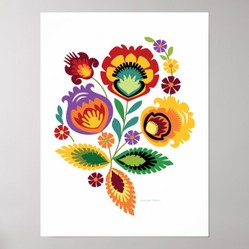

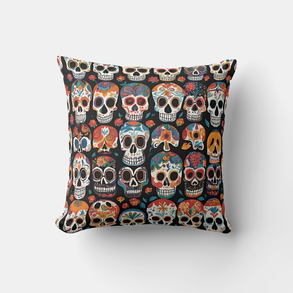
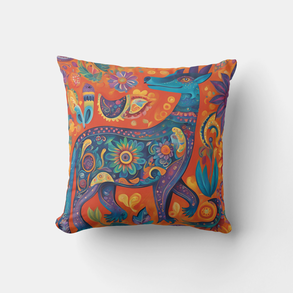
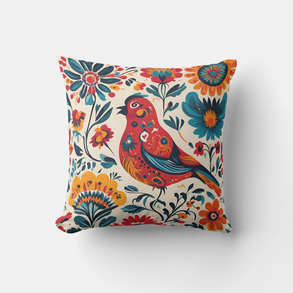
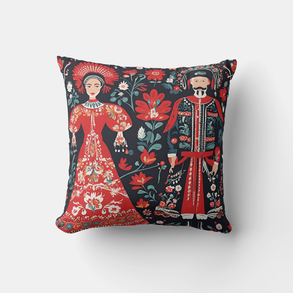
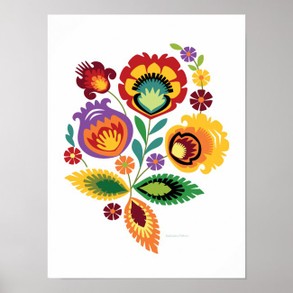





 Exploring Traditional Japanese Tapestry Landscape Art: A Window into Nature’s Serenityon 09/01/2024
Exploring Traditional Japanese Tapestry Landscape Art: A Window into Nature’s Serenityon 09/01/2024
 Are Border Collies Really the Smartest Dog Breed?on 08/20/2024
Are Border Collies Really the Smartest Dog Breed?on 08/20/2024
 A Writer's Guide To Wizzley- A Gem of A Bookon 04/10/2013
A Writer's Guide To Wizzley- A Gem of A Bookon 04/10/2013
 Why Did The British Celebrate Thatcher's Death?on 04/08/2013
Why Did The British Celebrate Thatcher's Death?on 04/08/2013

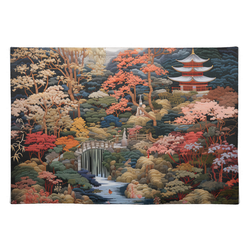
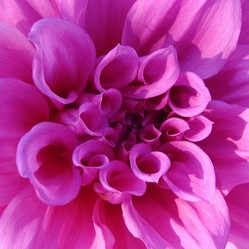
Comments
The computer crashed afore I could communicate another component of my consideration of Polish folk art as copying Mexican folk art (or of Mexican folk art as copying Mexican folk art ;-D) in centering around a consummate folk artist, such as Diego Linares among Mexican artists.
Mightn't there be a Polish woman mattering as much to Polish folk art as Frida Kahlo mattered to Mexican folk art?
The third paragraph, Mexican Folk Art Is Often Depicted with Skulls and Mythical Creatures Known as the Alebrijes, alerts us to Mexican folk artist Pedro Linares.
Is there a Polish equivalent for Polish folk art?
The computer crashed before I commenced another component of my previous observation and question.
In particular, I detect color, placement and shape parallels among Kahlo, Mexican and Polish arts in the product lines under the third subheading, Mexican Folk Art Is Often Depicted with Skulls and Mythical Creatures Known as the Alebrijes.
Might Kahlo and Mexican arts perhaps look more congruent with one another than with Polish arts, and vice versa in terms of death, dying and rebirth?
Your product line affirms similar colors and designs between Mexican and Polish folk arts.
Those colors, patterns and shapes likewise agree with a triangle airing influences from and upon Magdalena Carmen Frida Kahlo y Calderón[a] (July 6, 1907-Jul 13, 1954) and the two aforementioned arts.
Kahlo conserved German cultural influences in her paternal line. The countries Germany and Poland draw upon common intercountry borders.
So Kahlo might have served as an artistic conduit between German, Mexican and Polish folk arts and vice versa, migntn't she?
The "elegant bird" and the orange flower appear to me particularly sculpture-friendly.
Wouldn't their metal counterparts -- if only there were some ;-D -- work wonderfully as garden, lawn, yard sculpture?
The third paragraph to the second subheading, The origins and history of Mexican folk art, advises us that "Another notable aspect of Mexican folk art is the vibrant and detailed work of alebrijes. These fantastical creatures, often made from papier-mâché or carved from wood, are painted in bright colors and intricate patterns. Alebrijes originated in Oaxaca in the 1930s when artist Pedro Linares had a dream during an illness in which he saw these creatures. When he recovered, he began to recreate them in his art, and the tradition quickly spread."
The word alebrije appears to be something that Linares heard in a dream.
And yet it never manifests in any etymological dictionary. Online sources mention it as paper-made or wood-carved fantastic animal. But they never offer where the word parts originate.
Would it be fantastic animal?
The third paragraph to the second subheading, The origins and history of Mexican folk art, advises us that "One of the most famous and beloved forms of Mexican folk art is Day of the Dead (Día de los Muertos) artwork. This tradition, which dates back to pre-Hispanic times, honours deceased loved ones with colourful altars (ofrendas) adorned with sugar skulls (calaveras), marigolds, candles, and photos. The calavera, often made from sugar or clay, are intricately decorated and have become a symbol of Mexican culture worldwide."
The clay calavera appeals to me as durable and re-usable even as the sugar calavera appeals to me as crowd-pleasingly edible.
End-October weather here can be quite pleasant around Day of the dead and Halloween and Samhain even as sugar-consuming (as opposed to protein-consuming) ants still crawl around.
What do you do to discourage invertebrates such as ants from delighting in something so delicious (to both ants and people ;-D)?
Thank you for your comment below, in answer to my previous observation and question.
That rug looks like something readily obtainable in terms of color schemes if not in terms of color patterns and rug material.
Perhaps I might have tried to match a bedspread color even as this color scheme works for a multiple-bed room with different-patterned bedspreads such as in the product line ;-D!
Hi DerdriuMarriner,
I'm not sure about the rug under the bad, it seems to be a Mock up at that Redbubble are using and I can't it find it on their site anywhere
Thank you for the Redbubble link.
All the bedspreads generally and the Mexican folk art specifically are so invitingly photogenic.
It's interesting how the rug underneath invites their best imaging.
What material is such a cooperative -- ;-D -- rug made of?